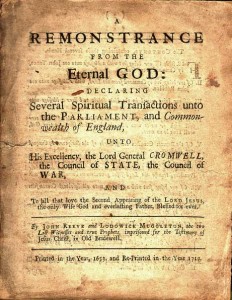English Civil War 1625 – 1649
I think the most significant cause was Charles not ruling according to the law because it is a “root cause”, if he was ruling according to the law then the grand remonstrance would have never been needed then Charles didn’t need money for his situation or obtain money without parliaments consent. And if Charles ruled according to the law then he never had to invade the house of commons.

The grand remonstrance to limit King Charles the I power
http://library.sc.edu/spcoll/britlit/milton/images/2island20.JPG
most significant cause 1.The Solemn League and Covenant 1643
The Solemn League is an agreement between the English and Scots by which the Scots agreed to support the English Parliament against King Charles the I. During the first Civil war parliament agreed to sign the Solemn League and Covenant if they help them but then KIng Charles the I escapes and asks for help from the Scotts. Then Charles the I signed the agreement.
Most significant cause 2 : Battle of Naseby June 14 1645
I think this 2nd component is significant because it was the “turning point” of the civil war. Charles and his forces fought with parliament until Parliament won the battle and Charles military forces were defeated.
The third significant cause : Charles I escapes December 1647
Charles the I escaping is another significant cause because then it starts another (short) Civil War. Charles didn’t escape until he signed the Solemn League and Covenant agreeing that Scotts would help then he would allow Presbyterianism into England which was written in the agreement of the “Solemn League and Covenant”. Charles agreed and then he gets his army back.
Most significant consequence: Execution of Charles I January 30 1649
The execution of Charles was an important cause because seeing it as a execution is a huge impact on his people and that they would not have a Monarchy and he is dead and now his next heir will get the throne.
Cromwell and the Republic 1649-1661
Most significant event 1: Instrument of government appoints Cromwell Lord Protector December 15 1653
If they have never assighned Cromwell as the lord protector of England then it would have changed things to better or worse. Cromwell is pretty much a military dictator with alot of rules about religions.
Most significant event 2: Blue Laws are imposed April 1655
Blue laws were strict rules about religious activities and any other entertainment. The blue laws prohibited Christmas, drinking,gambling and going to the theatre. They were so unpopular with the citizens of England.
Charles II and Restoration of the Monarchy 1661-1685
Most significant event: Parliament passes the Test Act January 1678
The test act was a law that prohibited catholics from parliament positions,jobs and universities. This law had a giant impact that it affected the next king.
James II and the Glorious Revolution 1685-1689
Most significant event 1: James II institutes a reign of terror – Bloody Assizes – against opponents June 1685
James started a reign of terror against the Duke of Monmouth and his supporters, the duke was an illegitimate (can not be king) son of Charles II and had come to try and claim the throne but parliament denied it because they didn’t want a third Civil War. After parliament denied Duke he was executed.
Most significant event 2: James II violates Test Act appointing Catholics to government positions November 1685
James started assigning positions to Catholics without parliaments consent. He followed Charles the I footsteps because Charles the I obtained money without parliament consent but James gave Catholics work positions. I think this was the signal for Parliament to invite Mary and Willaim over to England and become the new king and queen. The test Act was meant for them but NOT to be surrounded by Catholics.
